How to Find a Comfortable Cosy Care Home

Deciding to move into a care home is one of life’s biggest transitions. It’s natural to feel a mix of emotions—worry, apprehension, and even fear, but knowing that your loved one will receive high-quality care can provide some reassurance. Families often wonder whether their loved one will feel truly at home, whether the care home environment will feel warm and inviting, or whether it might feel clinical or impersonal.
The truth is that a well-designed care home should offer far more than just care. It should provide comfort, safety, and a genuine sense of home. Every detail, from the layout of the spaces to the personal touches in daily life, should be designed to help residents settle in, feel at ease, and enjoy their days to the fullest. A dedicated nursing home team plays a crucial role in this, ensuring that the atmosphere is supportive and caring, and that each resident feels valued and cared for.
Modern care homes are addressing these concerns to create environments that feel truly welcoming, to make the transition easier and more reassuring for residents and their families.

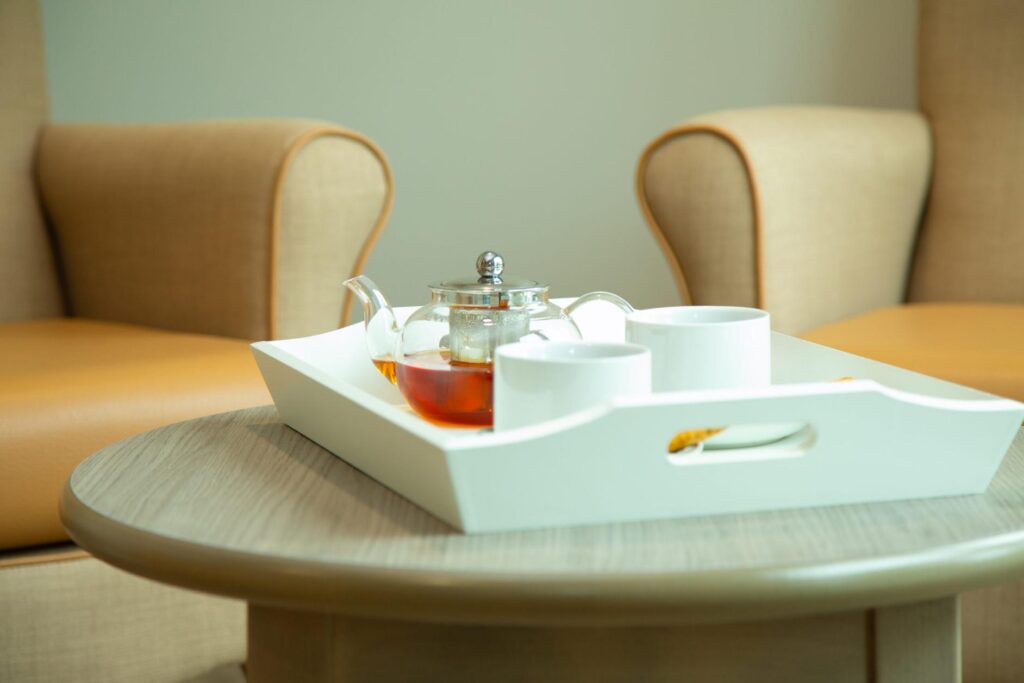
A Warm and Comfortable Home
One of the most frequent concerns families share is whether a care home will feel like a warm and comfortable place—or whether it might feel cold and clinical.
This worry is completely understandable. For many people, the idea of leaving their familiar surroundings can feel overwhelming, and they may wonder if a care home will offer the same sense of belonging they’ve always had. Families, too, want to be reassured that their loved one will have access to spaces where they can relax, feel safe, and enjoy their days in comfort.
These concerns highlight how important it is for care homes to balance the highest standards of professional care with thoughtful design, creating a safe and comfortable environment that feels personal, homely, and welcoming.
Creating a Welcoming Environment That Feels Like Home
When people think about what it means to feel “at home,” it’s about so much more than just a building or a roof over their heads. Home is a feeling. It’s a sense of comfort, familiarity, and safety. That’s why good care homes prioritise creating spaces that evoke warmth, independence, and emotional well-being. As well as these elements, personal care services play a crucial role in creating a homely atmosphere. These services, such as washing, dressing, and assistance with daily activities, ensure that residents feel comfortable and well-cared for.
Here are some of the ways care homes achieve this homely atmosphere:
- Quiet Lounges for Relaxation: Peace and privacy are so important, particularly during big life transitions. Quiet lounges allow residents to unwind in a calm environment, whether they want to enjoy a good book, have a quiet chat with a family member, or simply relax. These spaces offer a retreat from busy communal areas, giving residents a choice of where and how to spend their time.
- Cosy, Inviting Spaces: Details matter when it comes to creating comfort. Warm, soft furnishings, natural light, and inviting décor can make all the difference in helping residents feel at home. From comfortable armchairs to thoughtfully arranged furniture, these spaces are designed to be welcoming and familiar, encouraging relaxation and connection.
- Personalisation of Rooms: One of the best ways to make a new environment feel like home is by adding personal touches. Residents are often encouraged to bring their own belongings—like family photos, cherished ornaments, or their favourite bedding—to make their space uniquely theirs. These personal details help foster a sense of identity and familiarity, making the transition to a care home much smoother.
- Spaces for Every Mood: A well-designed care home will provide a variety of spaces to suit different moods and needs. Whether it’s a cosy corner for quiet reflection or a vibrant area for socialising, the layout should give residents the flexibility to spend their day in ways that feel comfortable and natural to them.
Ultimately, care homes that prioritise a homely atmosphere offer more than just a place to live—they provide an environment where residents can feel valued, independent, and happy.
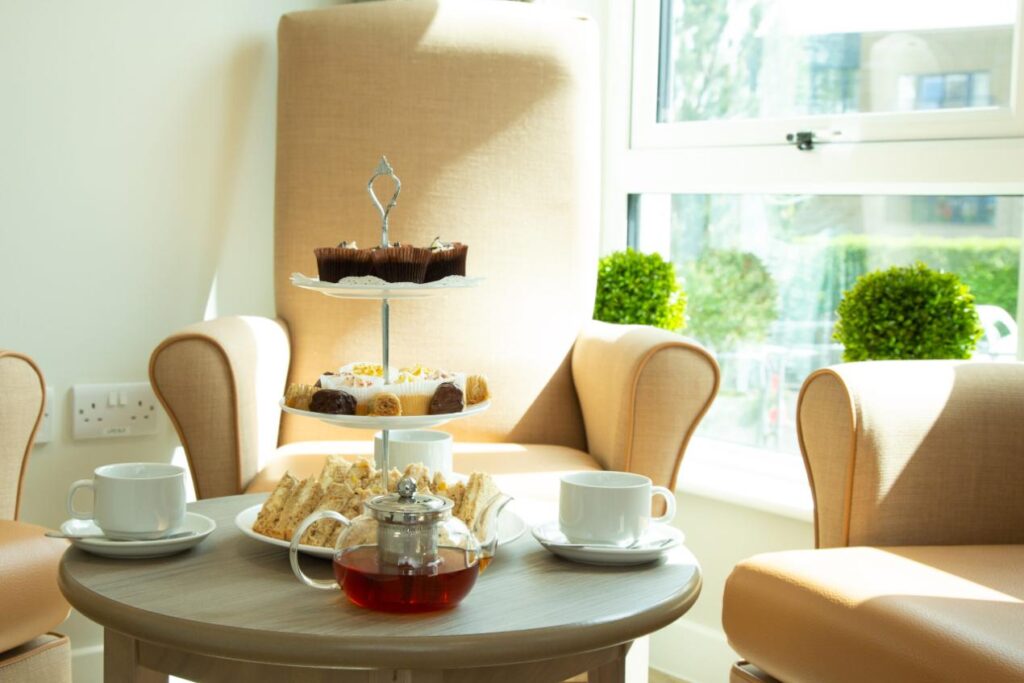
Personalised Care that Make Residents Feel at Home
Another common fear is that care homes might feel institutional, with rigid routines or impersonal settings. It’s easy to see why people might worry about this, but modern residential care homes are dedicated to creating environments that feel anything but institutional. Instead of strict schedules, many care homes focus on providing choice and independence for residents. Whether it’s deciding how to spend their day, choosing from a variety of meal options, or participating in activities that reflect their interests, residents are encouraged to live their lives on their own terms.
The design of modern care homes plays a big part in helping residents feel comfortable and at ease. Small, thoughtful details—such as warm lighting, quiet areas for relaxation, and inviting communal spaces—help to create a sense of belonging that residents can connect with. The goal of any care home should be to provide not just care, but community, companionship, and a sense of home.
A Unique Space for Well Being
For residents living with dementia or who simply enjoy a peaceful environment, thoughtfully designed spaces can play a crucial role in supporting their well-being. One example of this is the creation of sensory rooms—specially designed spaces that provide a calming sanctuary for relaxation and gentle stimulation. A sensory room is a dedicated space filled with soothing sounds, soft lighting, and tactile features. These elements are carefully chosen to create an environment that promotes calmness and emotional balance, reducing feelings of anxiety or agitation.
Sensory rooms are especially beneficial for residents living with dementia or those who may feel overwhelmed in traditional settings. The room’s carefully designed features help to stimulate the senses while providing a safe, therapeutic environment that encourages relaxation and well-being. Having spaces like sensory rooms within a care home demonstrates a commitment to creating environments that cater to the unique needs of residents, ensuring they feel supported and valued.
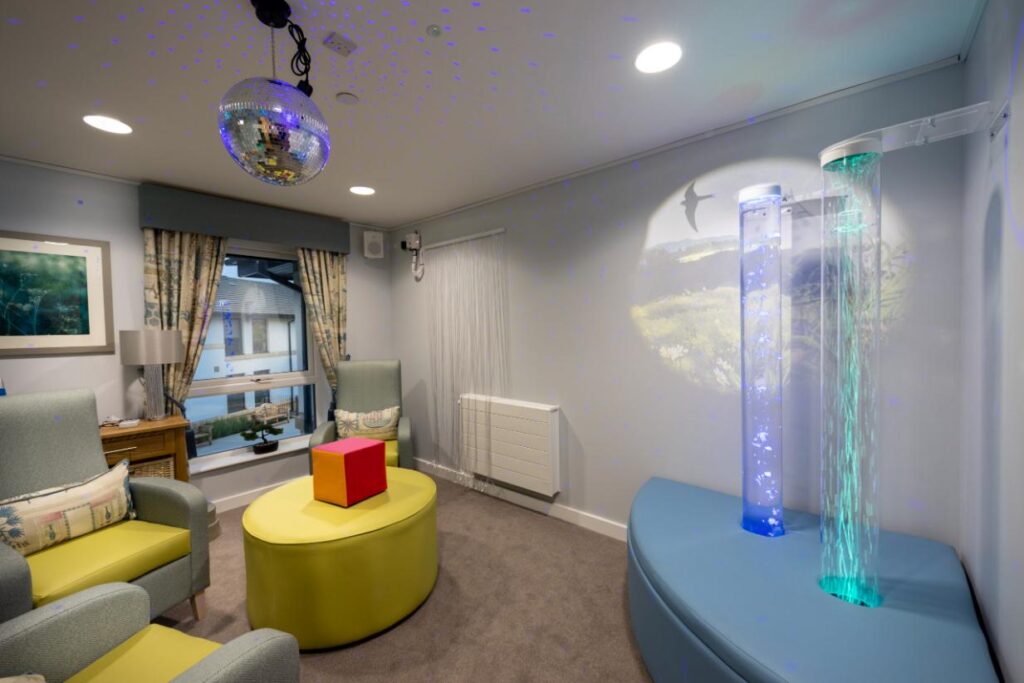
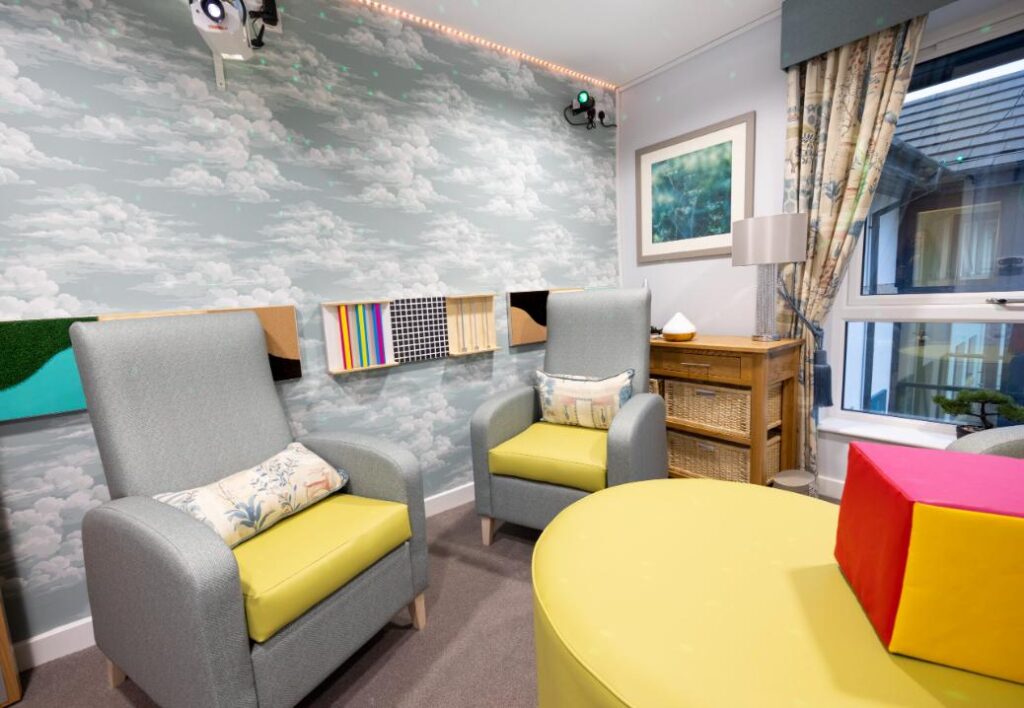
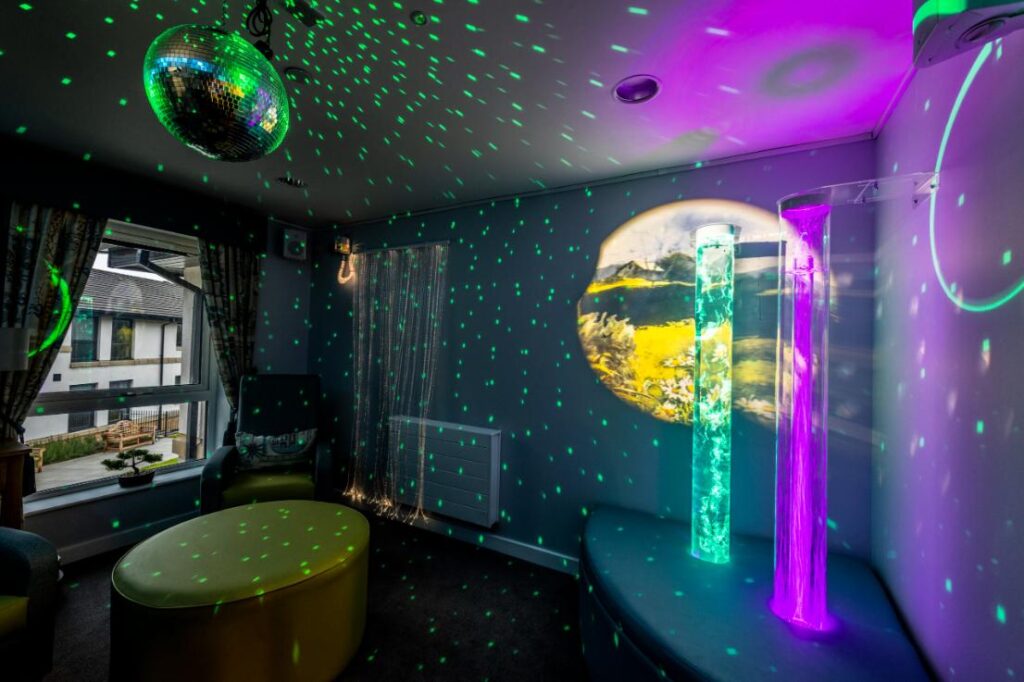
Communal Spaces Designed for Every Need
A great care home recognises that every resident is different and that their environment should reflect their individuality. That’s why it’s important to provide a range of spaces to meet different needs, including:
- Peace and Reflection: Quiet lounges and sensory rooms offer tranquil retreats where residents can unwind, whether they want a moment of solitude or a peaceful place to spend time with loved ones
- Socialising and Activities: For residents who enjoy companionship or getting involved in group activities, vibrant communal spaces offer plenty of opportunities to connect with others. From craft sessions to gardening clubs, these spaces encourage creativity, friendship, and fun.
Care isn’t just about meeting physical needs—it’s about creating a true sense of home. From cosy, quiet lounges to innovative sensory rooms, every aspect of luxury care homes has been carefully designed to support the comfort, well-being, and happiness of our residents.

Feel at Home at Boclair
If you’re considering care for yourself or a loved one, we’d love to welcome you for a visit. Seeing the home in person can make all the difference, and our team is always on hand to answer any questions you may have. Get in touch today to arrange a tour or learn more about how we create a warm, welcoming environment at Boclair Care Home. We look forward to welcoming you.






